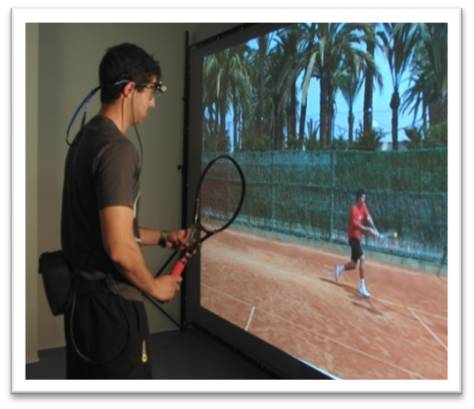Motor Control and
Learning Lab
Techinques and equipment used in the Motor Control and Learning Lab
POLHEMUS LIBERTY
Electromagnetic motion tracking system (information about X, Y, Z axis and angular displacements, azimut, elevation and rotation), with a 240Hz maxim recording frequency regardless of the number of sensors connected. Because of their higher output, it is ideal to application in human movement studies, as in sport skill.
Specifications:
- Degrees of freendon: 6DOF.
- Number of sensors: 1-8.
- Update rate: 240 Hz per sensor.
- Static accuracy: 0.03in.
- Static accuracy orientation: 0.15º.
- Latency: 3.5ms.
- Position resolution from 30cm: 0.00015º 0.0004cm

LONG RANGER
Long range receiver from up to 4.5 meters of distance. Ideal for human movement analysis in sport practice situations. 15 meters cable that facilitate its displacement by register area.
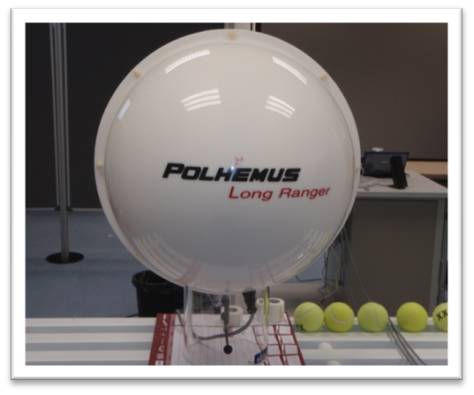
The laboratory has two sportive radars available with which value displacements speed as athlete as sportive objects. The models are the following SR3600 RADAR
It has a speed range from 10 to 250 MPH, range: 2 meters to balls and 25 meters to cars, resolution +/- 1 MPH, with the option of shown units of measure in miles or kilometers, in shot or continuous mode, the chance of place it on a tripod, dates port, external jack and audio indicator.
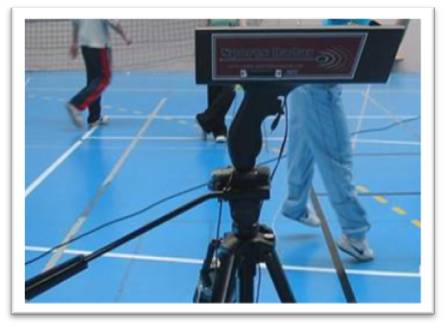
Accuracy of +/- 0.1 MPH. Measure sppeds from 5-150 MPH, acquiring time objects of 0.01 sec, and the option of shown units of measure in MPH, km/h and knots. Date exit format TTL and weight of 1.3 kg.
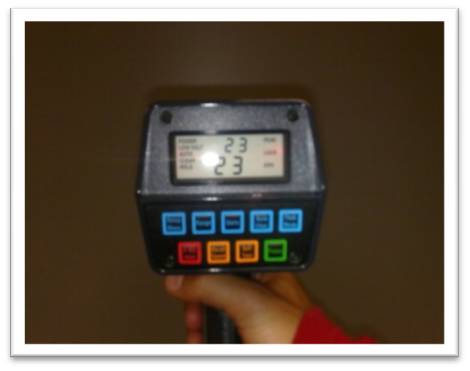
Timing system to sportive events, allowing obtain temporal values. Another use for this instrument it can be to control the execution rhythm. The system consists of the following components
Infrared ray photocell with 7 meters of range and it can be connected to the chronometer CASIO HS-30.
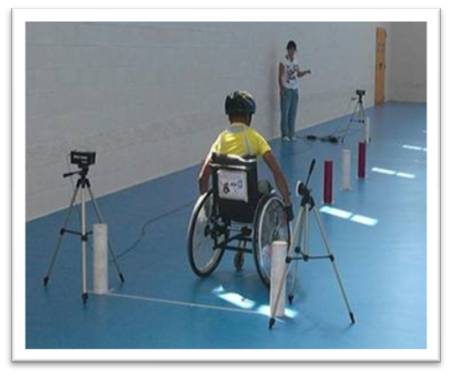
CASIO HS-30 DIGITAL STOPWATCH:
7 digit timing with a measure unit of 1/100 sec.
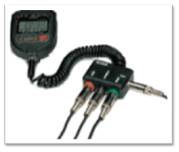
3. Trajectories perception analysis and mobile interception
We have 2 ball-thrower machines available to be able to value answers faced with reliable conditions, standardizing measurement protocols.
Ball-thrower machine with a speed range of 15 to 130km/h, throw frequency of 2 to 10 sec., with the possibility of horizontal oscillation, vertical, random and 2 lines, electronic elevation from 0 to 50 degree. Possibility of lifted and cut effect.
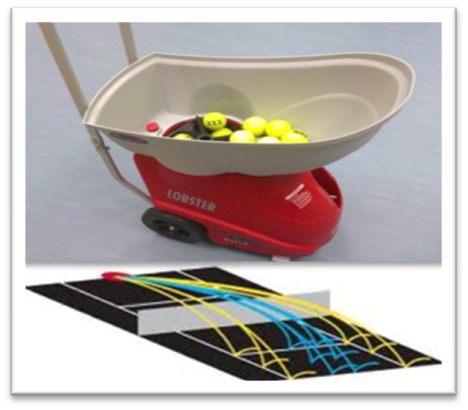
This machine consists by a metal structure, on which are two independent motors, which allow you to vary the rotational speed of the wheels, leading variety of trajectories and distances of the ball throw.
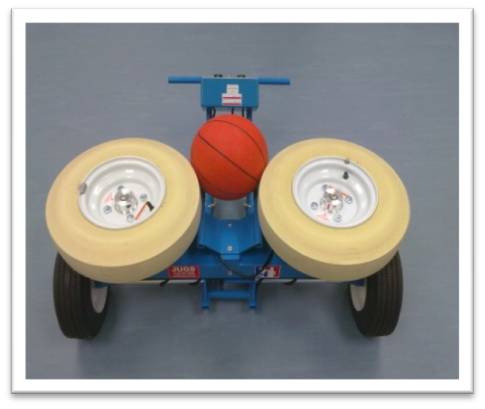
It is used to measure fly time or contact time. It is a useful instrument to measure movement time in sport skills and other activities
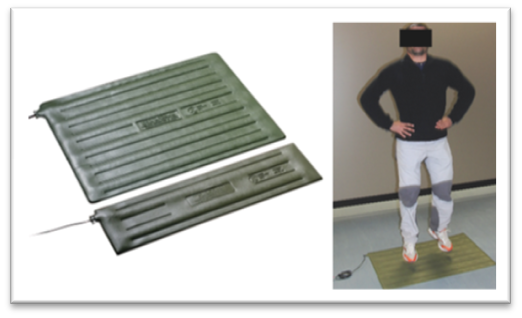
5. Coordinative tests
These tests are designed to measure the ability in arm and hand movements. They are a reliable and validity tests used to analyze different populations. In sport activities are employed to know modifications in athlete performance during and after training.
The O’Connor Finger Dexterity Test requires hand placement of 3 pins per hole. This test has been used successfully as a predictor for rapid manipulation of small objects, as in assembly line work. It has also been found useful in predicting success for instrument work, such as the assembling of armatures, miniature parts of clocks and watches, rapid hand and eye work, filling vials and small lathe work.

Roeder Manipulative Aptitude Test measures hand, arm, finger dexterity, and speed. It is designed to test individuals for employment and to test elementary through college students when dexterity is a primary requirement. The board has four receptacles for holding washers, rods, caps, and nuts.The performance board also is comprised of a horizontal T-bar and 40 inserts arranged in a predetermined pattern.
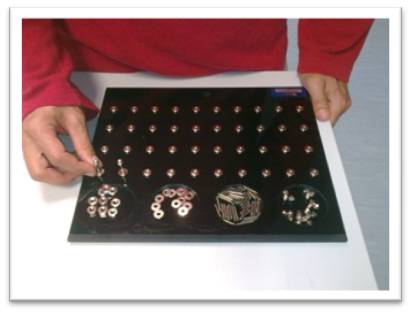
Test used to measure the ability to maintain an accuracy position with the hand. The tests show the contact numbers that the participant do not maintain the stylus in the hole.
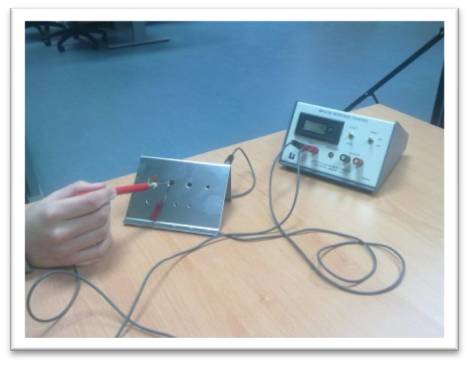
This is a test of motor coordination and learning which requires both arms to work together. The subject’s task is to move the metal pointer around the anodized star pattern without leaving the pattern.
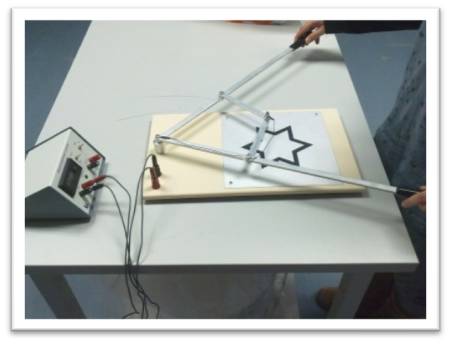
This test is used to measure the ability to control mechanical tasks. Different tools are employed to analyze the participant manual dexterity.
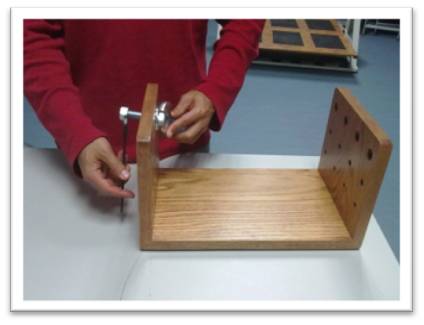
Stabilometer to measure in real time the ability to balance in participants. Different parameters like task time or angle limits can be controlled by the research. Dates from stabilometer can be registered for a CPU for posterior analysis.
Specifications:
- Platform Dimensions: 42″ x 25.5″.
- Overall Dimensions: 42″ x 38″ x 22″.
Features:
- Electronic tilt angle measurements with digital angle readout.
- User selectable balance thresholds for left, right and center zones.
- Platform re-zero ability.
- Built-in timing functions for test and rest timing.
- Built-in repeat cycle counter for multiple trials.
- Built-in display for test data.
- Test Parameter storage.
- Analog output voltage proportional to tilt angle.
- Event marker to indicate test and rest intervals.
- Tone indicator to signal beginning and end of tests.
- Friction Free tilt action.
- Remote start.
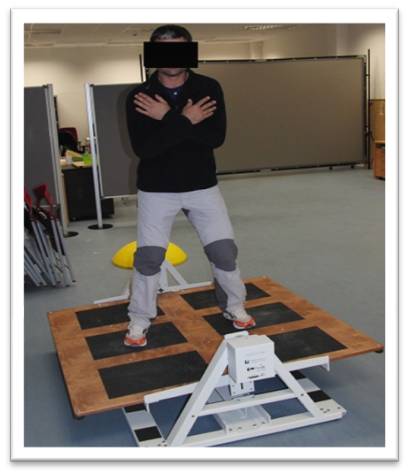
7. Eye tracking motion system ASL Mobile Eye
The eye tracking system can collect eye movements and point of gaze information during the performance of natural tasks allowing the use of unconstrained eye, head and hand movements. Similar to a glasses, eye tracking system has two camera, one to record eye motion and other to record the scene that occurs in front of the subject. It is a portable instrument and for this reason it is possible to measure in any environment.
- Analysis of making decisions and attentional focus.
- Perceptive training to detect pre-cues to improve motor response.
- Influence of level performance in perceptive behavior.

- Marketing (publicity design).
- Learning (visual behavior in motor or reading learning).
- Driving behavior (analysis of visual search strategies of driving situations).
- Military activities (Study of atentional focus in risk situations).
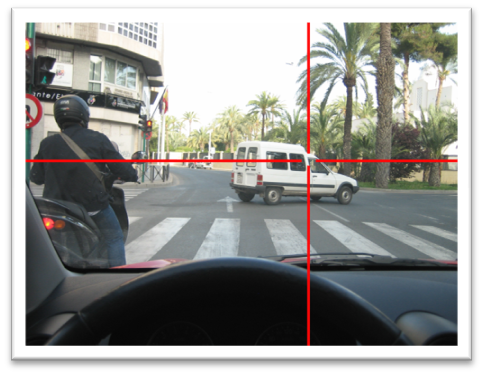
To reproduce similar tasks with a good measure control, we use an HD screen, with size of 3x2m. A Optoma EP1080-DLP projector is employed in measure situations.
